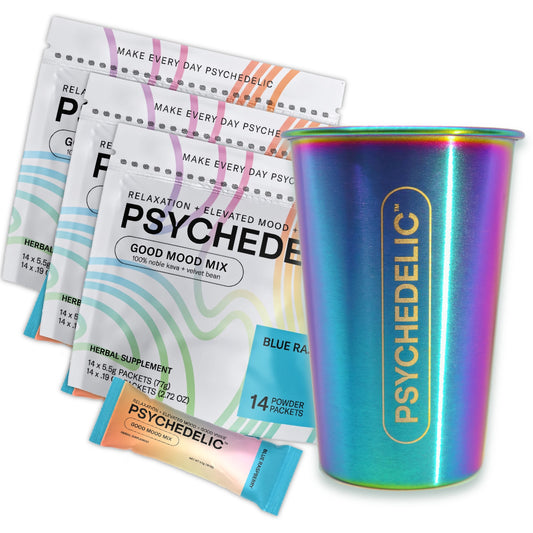Learn About Golden Psycho and Why It’s Trending.
Learn About Golden Psycho and Why It’s Trending.
Blog Article
Everything About Psychotomimetic Compounds: Their Role in Psychological Research
Psychotomimetic substances, such as LSD and psilocybin, have actually amassed raising rate of interest in psychological research for their ability to reproduce psychotic signs and symptoms and supply understanding right into numerous mental health and wellness conditions. Their communications within the mind, specifically via serotonin and dopamine paths, recommend a facility partnership between awareness and neurobiology that might open novel restorative opportunities. As researchers proceed to explore their prospective applications, honest factors to consider bordering their use in professional setups become critical, increasing crucial concerns regarding safety and security and educated permission that necessitate additional exploration.
Definition of Psychotomimetic Substances
In the realm of emotional research study, psychotomimetic compounds are materials that can induce effects appearing like those of psychosis, such as hallucinations, misconceptions, and transformed perceptions of fact - About Golden Psycho. These compounds can be classified into various classifications, consisting of hallucinogens, dissociatives, and particular stimulants, each producing distinct psychological results
The medicinal activity of psychotomimetic compounds typically includes inflection of neurotransmitter systems, particularly those related to serotonin, dopamine, and glutamate. For instance, substances like lysergic acid diethylamide (LSD) mainly act on serotonin receptors, leading to profound alterations in sensory perception and cognition.
The energy of psychotomimetics in research depends on their ability to mimic psychotic signs and symptoms, supplying a design for recognizing the hidden mechanisms of psychotic disorders such as schizophrenia. By studying the results of these substances, researchers can get understandings right into the neurobiological and emotional processes that add to psychosis.
Moreover, psychotomimetic compounds have been checked out for their restorative capacity in treating various mental health problems, including depression and stress and anxiety, highlighting their twin role in both research study and potential clinical applications.
Historic Development and Context
The exploration of psychotomimetic substances has an abundant historical context that goes back to old people, where substances such as psilocybin mushrooms and peyote were used in spiritual and recovery practices. These early uses usually intertwined with spiritual rituals, recommending a profound reverence for the transformed states of awareness caused by these substances.
The mid-20th century noted a considerable switching point in the study of psychotomimetic compounds, particularly with the synthesis of LSD by Albert Hofmann in 1938. The succeeding popularization of LSD in the 1960s catalyzed a wave of passion in both its emotional effects and prospective therapeutic applications. Scientists started to explore just how these materials can imitate psychotic states, offering insights into mental health problem.
Nonetheless, the enhancing association of psychotomimetics with counterculture movements resulted in regulative reaction, finishing in the criminalization of a lot of these substances. Despite these difficulties, the renewal of passion in the healing potential of psychedelics in the 21st century has prompted renewed research. This historical trajectory highlights the advancing understanding of psychotomimetic substances, changing from sacred compounds to topics of scientific query and, potentially, therapeutic guarantee.
Mechanisms of Activity
Comprehending the systems of action of psychotomimetic compounds reveals the detailed methods these compounds interact with the brain's neurochemistry. These substances largely apply their impacts with modulation of neurotransmitter systems, especially serotonin, dopamine, and glutamate. As an example, several timeless psychedelics, such as psilocybin and LSD, primarily serve as agonists at serotonin 5-HT2A receptors, resulting in altered assumption and cognition. This interaction not just impacts sensory processing yet likewise enhances emotional and reflective experiences.
In addition to serotonin, dopaminergic pathways are dramatically affected by compounds like mescaline and certain cannabinoids, which can bring about modified states of awareness and modifications in state of mind and motivation. The NMDA receptor antagonism observed with compounds like ketamine highlights another path through which psychotomimetics might induce dissociative states and extensive changes in assumed processes.
The neurochemical waterfalls initiated by these communications result in facility and multifaceted mental results. Understanding these systems is crucial for both the improvement of psychological research study and the therapeutic potential of psychotomimetic compounds, as they give insights into the underlying neural correlates of altered states of consciousness.
Current Research and Applications
Recent investigations right into psychotomimetic compounds have revealed a revival of rate of interest in their restorative applications, especially in the areas of psychiatry and psychology. Scientists have actually started exploring substances such as psilocybin, LSD, and ayahuasca for their potential to reduce symptoms connected with numerous mental wellness disorders, including depression, stress and anxiety, and PTSD.
Scientific trials have demonstrated that, when administered in regulated environments, these compounds can promote profound psychological experiences, advertising emotional advancements and enhanced therapeutic results. For instance, research studies have shown that psilocybin-assisted treatment can bring about considerable reductions in treatment-resistant depression, with results lasting for a number of months post-treatment.
Furthermore, psychotomimetic substances are being examined for their capability to foster neuroplasticity, potentially enabling more reliable rewiring of maladaptive thought patterns. These searchings for recommend that such compounds might act as complements to typical psychotherapeutic approaches, boosting the efficiency of therapeutic interventions.
As study advances, the focus is moving towards comprehending the optimum dosages, healing setups, and participant attributes that can maximize the advantages of these compounds. This blossoming field holds assurance for changing psychological health and wellness treatment paradigms and dealing with the restrictions of traditional psychiatric medications.
Moral Factors To Consider in Study

Navigating the moral landscape of research study involving psychotomimetic compounds is crucial to guaranteeing individual safety and the honesty of study end results. Researchers website link must focus on educated consent, making sure that participants fully comprehend the prospective threats and advantages associated with the compounds being examined. This consists of providing comprehensive info concerning feasible emotional impacts, consisting of acute and long-term effects, and permitting participants the chance to take out from the research any time without penalty.
Moreover, honest oversight by institutional review boards (IRBs) is necessary. IRBs review study protocols to safeguard participant welfare and support honest standards. This examination assists minimize risks and guarantees that research studies are carried out with scientific rigor. Furthermore, the capacity for browbeating should be very carefully analyzed, specifically when at risk populaces are involved.
Confidentiality is one more critical consideration. Scientists need to carry out durable steps to protect individuals' identifications and data, specifically offered the delicate nature of experiences related to psychotomimetic substances (About Golden Psycho). Inevitably, a commitment to moral methods not only cultivates trust between scientists and individuals however also enhances the trustworthiness and credibility of the study outcomes, adding to the innovation of psychological knowledge

Verdict
Finally, psychotomimetic substances, particularly classic psychedelics such as LSD and psilocybin, offer significant understandings into Bonuses emotional conditions via their special mechanisms of activity. Their restorative potential in attending to conditions like anxiousness and PTSD highlights the relevance of continued study in this field. Guaranteeing ethical criteria in research methods is crucial for participant read this post here security and educated consent, enabling for a liable exploration of these compounds' advantages and effects within psychological science.
Report this page